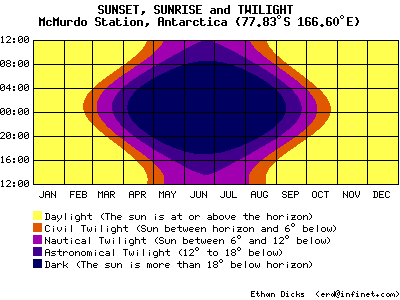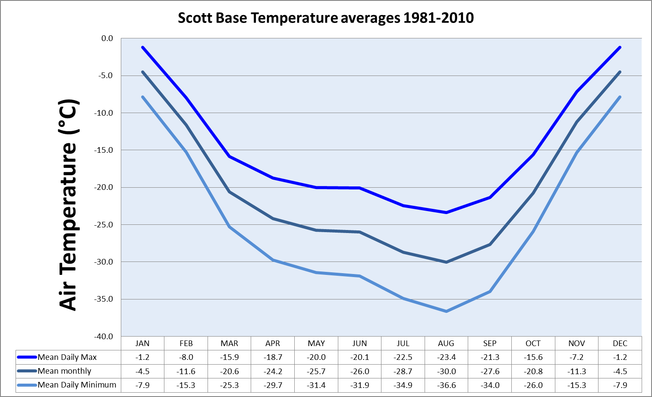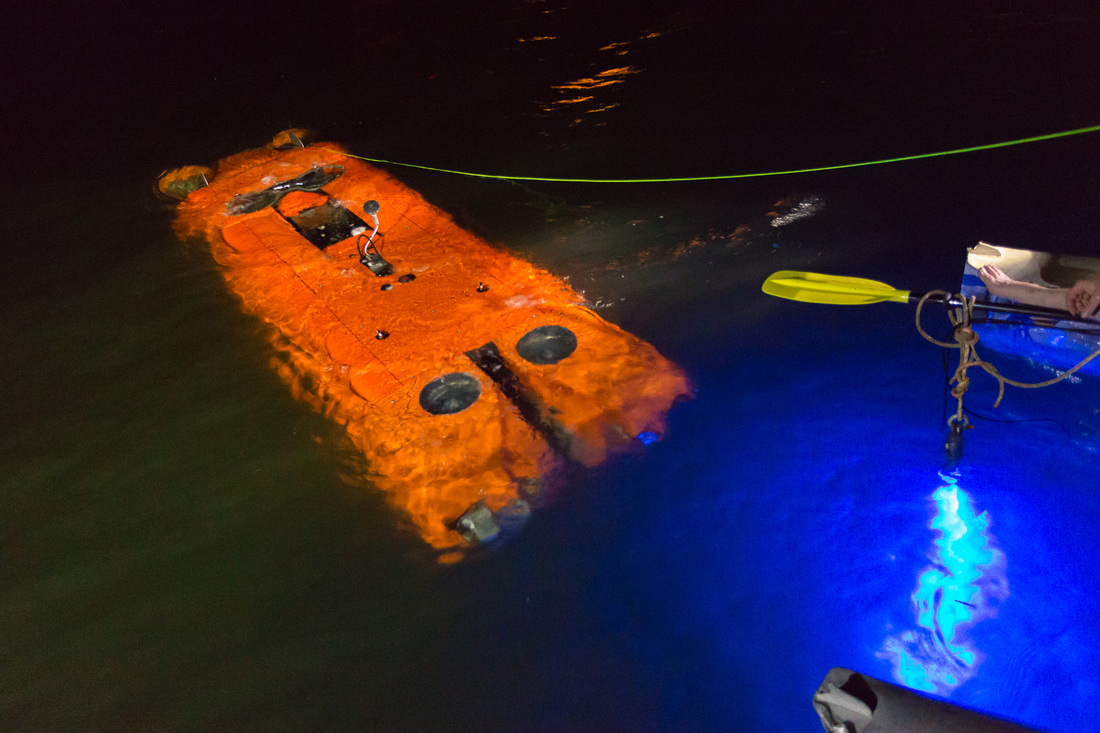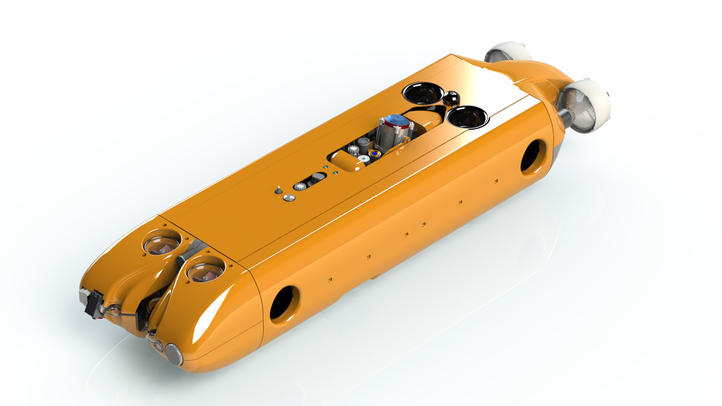where Is ARTEMIS Going?
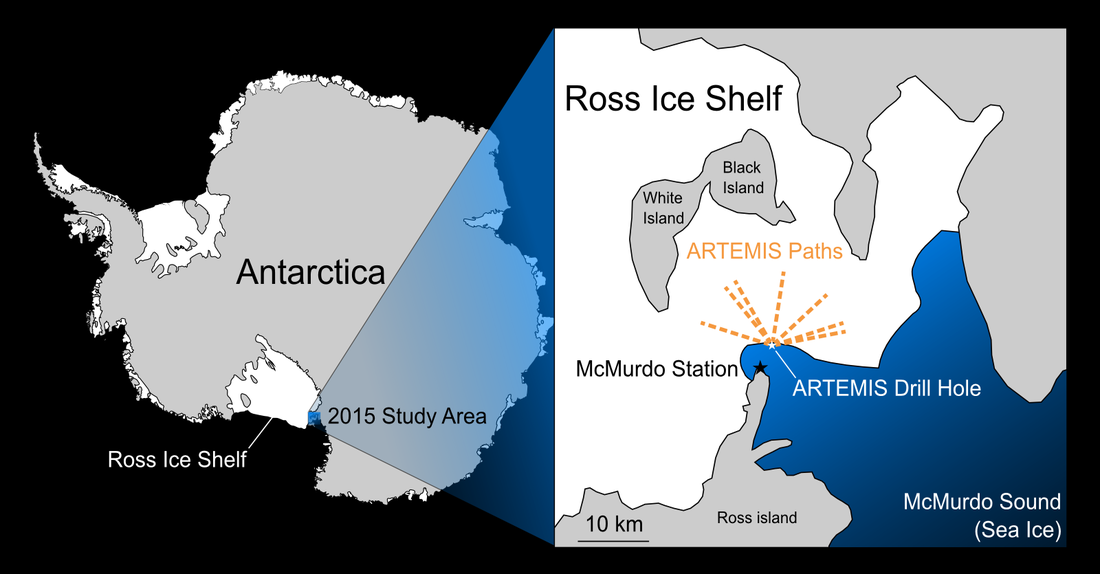
The ARTEMIS deployment area is just south of McMurdo Station, a U.S. Antarctic Program research station, roughly due south of New Zealand. (image: Peter Kimball)
We are deploying ARTEMIS beneath the Ross Ice Shelf, specifically in McMurdo Sound, just South of McMurdo Station, the U.S. Antarctic Program research station that makes our field work possible. ARTEMIS will follow 10 km paths under the ice shelf and back out to the launch and recovery drill hole. We will only be able to use one drill hole (and associated base camp location) this season, so we hope to send ARTEMIS on a radial pattern of missions, as indicated in the graphic above, again taken from our Astrobiology Science Conference poster.
Reporting by Peter Kimball
